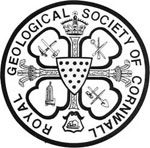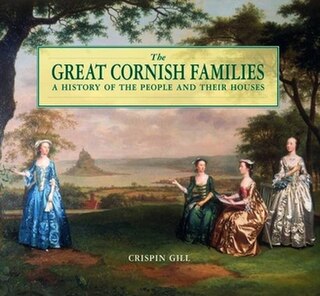
Falmouth is a town, civil parish and port on the River Fal on the south coast of Cornwall, England, United Kingdom. It has a total resident population of 21,797.
The Bolitho novels are a series of nautical war novels written by British author Douglas Reeman. They focus on the military careers of the fictional Richard Bolitho and Adam Bolitho in the Royal Navy, from the time of the American Revolution past the Napoleonic Era.
Sheriffs and high sheriffs of Cornwall: a chronological list:

The Royal Cornwall Polytechnic Society is an educational, cultural and scientific charity, as well as a local arts and cinema venue, based in Falmouth, Cornwall, England, United Kingdom. The Society exists to promote innovation in the arts and sciences.
Charles Fox was a Quaker scientist known for his contributions to Cornish mining. He also developed Trebah Garden, near Mawnan Smith in Cornwall. He was a member of the influential Fox family of Falmouth.
Robert Were Fox was a Quaker businessman who lived in Falmouth.

Robert Were Fox FRS was a British geologist, natural philosopher and inventor. He is known mainly for his work on the temperature of the earth and his construction of a compass to measure magnetic dip at sea.
George Wightwick was a British architect based in Plymouth, and possibly the first architectural journalist.

Sir Charles Lemon, 2nd Baronet was a British Member of Parliament for several constituencies and a baronet.
Sir Arthur Edward Ian Montagu Russell, 6th Baronet, MBE, FRS, was a British mineralogist of the 20th century. He was a collector and a collector of collections.
The Post Office Packet Service dates to Tudor times and ran until 1823, when the Admiralty assumed control of the service. Originally, the Post Office used packet ships to carry mail packets to and from British embassies, colonies and outposts. The vessels generally also carried bullion, private goods and passengers. The ships were usually lightly armed and relied on speed for their security. However, Britain was at war almost continuously during the 18th and early 19th centuries with the result that packet ships did get involved in naval engagements with enemy warships and privateers, and were occasionally captured.

The Royal Geological Society of Cornwall is a geological society originally based in Penzance, Cornwall in the United Kingdom. It was founded in 1814 to promote the study of the geology of Cornwall, and is the second oldest geological society in the world, after the Geological Society of London which was founded in 1807.
The Biographical Dictionary of British Quakers in Commerce and Industry, 1775–1920, by Edward H. Milligan, includes entries for some 2,800 people, arranged alphabetically. The last page is numbered 606.

Howard Fox was a shipping agent and played a large part in the economic and cultural development of the town of Falmouth, Cornwall. He was a member of the influential Fox family of Falmouth.
John Hearle Tremayne was a member of a landed family in the English county of Cornwall, and owner of the Heligan estate near Mevagissey. He was a member of the UK Parliament for the constituency of Cornwall, a Justice of the peace, and High Sheriff of Cornwall in 1831. He was also the second of four successive members of the Tremayne family who are credited with the creation of the gardens around Heligan House that are now well known as the Lost Gardens of Heligan.

Great Cornish Families: A History of the People and Their Houses is a book by Crispin Gill, published in 1995. A second edition was published in 2011 (ISBN 978-0-85704-083-1). Crispin Gill, at the time of the book's publication, lived in Plymouth and was assistant editor of the Western Morning News. The book names many notable families that have featured prominently in Cornwall's history.

Joseph Fox was an English apothecary and physician.

The Congregationalist Cemetery at Ponsharden, Cornwall was opened in 1808 to serve the Dissenting Christian congregations of Falmouth and Penryn. It received approximately 587 burials over a period of 120 years, before being abandoned in the 1930s. During the 20th century the site experienced significant neglect and extensive vandalism. In May 2012 a volunteer group began to restore the burial ground which is now a protected Scheduled Monument of national importance. The place-name Ponsharden is recorded in 1677 as "Ponshardy"; its meaning is Hardy's bridge.
Sir Edward Hain, was an English shipping magnate and politician from Cornwall, England. He represented St Ives as a Liberal Unionist from 1900 to 1904, and as a Liberal from 1904 to 1906. His shipping company, Hain Line, was sold to the recently merged Peninsular and Oriental Steam Navigation Company and British-India Steam Navigation Company after his death.











